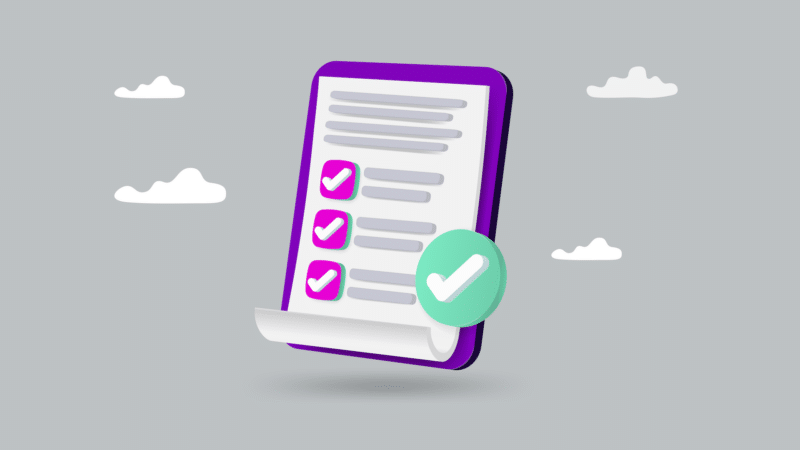
I’m all in on data as a valuable asset to an organization. It enables employees to perform analyses that drive data-informed decision-making. However, collecting meaningful data must be a priority to create this asset. Your intake form is critical to this process — after all, “garbage in, garbage out” applies to operational data, too.
Marketers must structure intake to capture the right inputs to tell a compelling data story beyond just KPIs and targets. With the right technology and systems, intake and data collection can become powerful strategic tools.
The role of an intake form in data segmentation
An intake form serves as the first point of contact between a client or business partner and the team executing the request. A good intake form provides structure, guiding requestors to include the most essential details for effective and efficient execution. An excellent intake form identifies key data isolation variables — allowing the business to segment and analyze data for meaningful insights.
For example, consider whether a request is a rush. If a client indicates the request type and desired due date, a project management system can apply logic to determine if it falls outside the established service-level agreement (SLA). If the SLA allows 10 days but the requestor specifies five, the system flags it as a rush.
Think of how helpful isolating rush requests when analyzing your department’s output KPI is. If you can track the percentage of jobs that are rush requests, you better understand how they impact resource management, prioritization, budgets and other key operational factors.
Dig deeper: 5 ways to use project management data to increase marketing ROI
Using data isolation to pinpoint issues
Beyond tracking KPIs and targets, identifying isolation variables allows for deeper analysis. For example, let’s say a department’s rejection rate has jumped from 2% to 12% over a few days. By isolating data variables, you can narrow down the source of the issue.
Suppose you can isolate rejections by region:
- Is the issue coming from a specific area?
- If yes, can you further isolate to see if the issues come from a certain deliverable type? If yes, the answer may be that requirements were changed for this deliverable type in this region and not communicated to the department.
- If no, continue to isolate the variables: Did this issue come down to a specific individual who may require further training?
- Did this issue come from a specific business unit, in which case the initial requests may have been flawed?
- If yes, can you further isolate to see if the issues come from a certain deliverable type? If yes, the answer may be that requirements were changed for this deliverable type in this region and not communicated to the department.
Building data isolation into metric strategies
When developing a metric strategy, identify:
- Your department’s KPIs.
- The primary and contributing data sets that inform them.
- The isolation variables that enhance analysis.
Build your intake form to capture these variables from the start, erring on the side of caution and anticipating future needs.
For instance, you may not have a well-established prioritization process currently. Still, because this is a hot-button topic, prioritization will likely need to be considered in the future. Even if you are not tracking intake requests by prioritization level now, consider building that functionality into your intake form.
For an enterprise that prioritizes projects from an early planning perspective, this can be a great way to remove that conversation from teams later on. If the intake form requires a project prioritization level to be clarified and it does not meet the threshold put forward by the enterprise, it simply does not move forward as a request.
However, even that data is relevant. Understanding the work a department does not take and why is key to the organization’s future operational planning needs. Establishing a prioritization level is a significant isolation variable for output, helping determine whether the work being executed aligns with strategic objectives and resource strategies.
Dig deeper: 5 ways to use project management data to enhance operational best practices
Optimizing the intake process for better user experience
Consider the human side of intake. Consider the CX of your intake form to ensure data integrity, support requestors in successfully submitting their requests and promote compliance with the intake process.
Utilize technology whenever possible
Start by developing your intake logic (e.g., “if X, then Y”). If someone is requesting a specific deliverable and certain information is not required, make sure the tool excludes or auto-populates those fields for the requestor.
Simplify the process for users
When possible, identify drop-down options for intake questions over open text. This will help guide your customers and streamline your data.
Determine the essentials
What information is needed to decide whether this work is right for the department to execute or not? Can you ask three questions to successfully determine if you will accept or reroute the request? If so, ask the minimum questions required to proceed to the next phase.
Know your audience
Consider what information your customer should provide in the intake request. Be mindful of questions better suited for someone else to answer.
Also, do they have the expertise to respond accurately? If account managers primarily complete intake requests, their expertise is likely greater than that of multiple business partners. Intake is where account managers shine. They are well suited for this function, and the integrity of their inputs should be extremely high.
More than just a form: Intake shapes data-driven marketing
Developing a strong intake form and process takes effort, but ensuring intake integrity sets your department up for data success. It enables accurate operational planning, supports resource requests with essential data and helps marketing teams identify risks and opportunities early for greater efficiency and effectiveness.
Dig deeper: Marketing projects: Why you should compile questions in advance
The post Data-driven decisions start with effective intake forms appeared first on MarTech.
